#e-commerce retailers and sellers
Photo

10 Best Discount Strategies for Fashion E-commerce Retailers
An effective guideline on discount strategies for e-commerce; check this out to find which one will suit your retail business. Make a change, and gain more sales!
#discount strategies and tactics#discount pricing strategies#creative discount strategies#e-commerce fashion retailers#discount strategies#e-commerce strategies#marketing strategy#e-commerce retailers and sellers
1 note
·
View note
Text
#Dropshipping#Amazon#E-commerce#Online Business#Selling on Amazon#Amazon Marketplace#Dropshipping Tips#Dropshipping Strategies#Amazon Sellers#Online Retail#Business Growth#Amazon FBA#eCommerce Tips#Retail Arbitrage#Amazon Selling Guide#Product Sourcing#Inventory Management#Customer Service#Marketing Strategies#Profitable Dropshipping
1 note
·
View note
Text
How to register a seller account on Asivado E-Commerce Retail Shop
How to register a seller account on Asivado E-Commerce Retail Shop
Asivado E-Commerce Retail Shop is a Ghana online shop that would be officially launched before the end of the year however, the site is already active and live. Sellers and Customers have already started buying and selling diverse products and services on the portal, which promises nothing but an easy shopping experience for all shoppers.
In this article, we look at How to register a seller…

View On WordPress
0 notes
Text
How Amazon transformed the EU into a planned economy
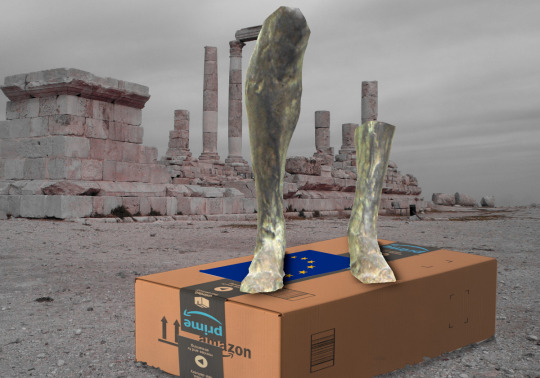
Amazon is a perfect parable of enshittification, the process by which platforms first offer subsidies to end users until they’re locked in, then make life good for business customers at users’ expense, until they’re locked in, then claw back all the value they can for themselves, leaving just enough behind to keep the lock-in going.
In a new report for SOMO, Margarida Silva describes how the end-stage enshittification of Amazon is playing out in the EU, with Amazon repeating its US playbook of gouging the small businesses who have no choice but to use the platform in order to reach its locked-in customers, making European customers and European sellers poorer:
https://www.somo.nl/amazons-european-chokehold/
The mechanism for this isn’t a mystery. Amazon boasts about it! They call it their flywheel: first, customers are lured into the platform with low prices, especially through Prime, which requires pre-payment for a year’s shipping, which virtually guarantees that customers will start their shopping on Amazon. Because customers now start their buying on Amazon, sellers have to be there. The increased range of goods for sale on Amazon lures in more buyers, who lure in more sellers, with both sides holding each other hostage:
https://vimeo.com/739486256/00a0a7379a
This flywheel creates a vicious cycle, starving local retail so that customers can’t get what they need from brick-and-mortar shops, which funnels sellers into offering their goods for sale on Amazon. The less choice customers and sellers have about where they shop, the more Amazon can abuse both to pad its own bottom line.
There are 800,000 EU-based sellers on Amazon, and they have seen the junk-fees that Amazon charges them skyrocket, to the point where they have to raise prices or lose money on each sale. Amazon uses both tacit and explicit “Most Favored Nation” deals to hide these price-hikes. Under an MFN deal, sellers must not allow their goods to be sold at a lower price than Amazon’s — so when they raise prices to cover Amazon’s increasing fees, they raise them everywhere:
https://pluralistic.net/2023/04/25/greedflation/
It’s not hard to understand why Amazon would raise its fees: the company has an effective e-commerce monopoly. Like Ozymandias, they have run out of worlds to conquer, and so their growth has to come from squeezing suppliers and/or raising prices, not from bringing in new customers. This is likewise true of mobile companies like Apple and Google, who have run out of people who are so excited about incremental mobile hardware gains that they’ll buy a new phone every year, which means that growth has to come from squeezing app vendors:
https://www.tbray.org/ongoing/When/202x/2023/06/09/Pixel-4-to-7
This is likewise true of the streaming companies, which is why Netflix is cracking down on “password sharing”:
https://pluralistic.net/2023/02/02/nonbinary-families/#red-envelopes
It’s true of the movie studios, which is why they want to zero out their wage bills by replacing writers with automatic plausible sentence generators that will write stupid movies that they think we’ll still pay to see because there won’t be anything else:
https://pluralistic.net/2023/05/06/people-are-not-disposable/#union-strong
It’s certainly true of Uber, which is why they’ve double the cost of a taxi ride and halved the wages they pay drivers:
https://pluralistic.net/2023/04/12/algorithmic-wage-discrimination/#fishers-of-men
Monopolies “grow” by making their customers and suppliers worse off. But they have to be careful about this: if it’s obvious that you’re using your market power to screw buyers, you can get in trouble with competition regulators. That’s because the only part of antitrust law that the neoliberal project left intact is “consumer welfare” — the idea that monopolies should only face enforcement when they raise prices and/or lower quality:
https://pluralistic.net/2022/10/10/play-fair/#bedoya
This focus on price-hikes has given monopolists a free hand to squeeze suppliers and workers, because a monopolist — from Walmart to Amazon — can claim that squeezing your workers and suppliers is necessary to enhancing consumer welfare. The less you pay to produce a product, the cheaper you can price it.
When a company has a lot of seller power, we call it a monopolist. When it has a lot of buying power, we call it a monopsonist. No one ever made a bestselling, family-destroying board game called “Monopsony” so most people haven’t heard of the concept. But monopsony is every bit as dangerous as monopoly, and monopsonists find it far easier to acquire market power than monopolists. Few suppliers can afford to have even 10% of their sales disappear overnight, so a buyer who accounts for 10% of your sales can demand deep discounts and other favorable terms.
Amazon is a monopolist, but it’s also a very powerful and ruthless monopsonist. For example, its audiobook division, Audible, has a 90+% market-share, and it used that market-power to steal at least $100m from audiobook creators, in a scandal dubbed Audiblegate:
https://pluralistic.net/2022/09/07/audible-exclusive/#audiblegate
For Europe’s 800k sellers who rely on Amazon to reach their customers, the monoposony conditions are blatant and shameless. Take listing fees: Amazon’s “flywheel” pitch claims that as the company grows, it achieves “economies of scale” that can lower its cost basis. But Amazon’s listing fees haven’t changed, even as the company experienced explosive growth in the EU (remember, sellers whose Amazon fees exceed their margins have to pass those fees onto buyers, and also raise their prices everywhere else to satisfy the Most Favored Nation requirement).
Amazon books the revenues from these fees — and other junk-fees it extracts from sellers — in Luxembourg, an EU member nation that provides a tax haven to multinational businesses that want to maintain the fiction that they operate their businesses out of the tiny kingdom. There is sharp competition in the EU to offer the most servile, corrupt environment for multinationals, and Luxembourg is a leader, along with Cyprus, Malta and, of course, Ireland:
https://pluralistic.net/2023/05/15/finnegans-snooze/#dirty-old-town
But at least listing fees haven’t gone up, unlike other fees, which have climbed sharply. Amazon falsely claimed that its additional revenues from fees were the result of growth by independent sellers, which Amazon pegged at 65%. Later, the company admitted that the true growth figure was 22%. Meanwhile, fees are up 85%.
The true growth figure might be lower still. Amazon refuses to show the math behind its growth figures, or even say which sellers and sales are included in the figure.
The SOMO report cites research by Juozas Kaziukėnas of the e-commerce research firm Marketplace Pulse, who finds that sellers are now giving 50% of their gross revenues to Amazon, an increase of 10% over the past five years across the whole EU. However, different EU (and ex-EU) countries have experienced much steeper increases in fees — in the UK, fees have nearly doubled (up 98%), and in France, fees more than doubled (up 115%).
Many of these increases come from the Fulfilment By Amazon (FBA) program, which is promoted as an optional service, but which is really obligatory — careful research shows that sellers who warehouse, pack and ship their own goods get banished to the depths of search results, even if they have ratings, costs and times that are competitive with FBA. This is especially true of the “buy box” that lands at the top of most searches. The company refuses to disclose how buy box positioning is determined, but 90% of products in the buy box pay for FBA.
Amazon has used excuseflation to hike its FBA prices, blaming higher energy prices for price hikes that predated the Russian invasion of Ukraine, and blaming covid for price hikes that predated the pandemic.
Italy’s competition authority did yeoman service in uncovering the sleaze of FBA, publishing an investigation that showed that Prime and buy box made the notionally “optional” FBA into a must-have for merchants, meaning that Amazon could jack up FBA prices without losing business.
Another notable source of gouging came in response to the UK and France adopting digital services taxes, which were meant to make up for the tax-base erosion enabled by Luxembourg’s flouting of EU tax law. Amazon passed these taxes straight through to its merchants, without seeing a comparable decrease in the number of sellers using its platforms — an unmistakable sign of market power. If you can raise prices without losing customers, then, by definition, your customers have nowhere else to go.
I’ve previously written about how Amazon’s $31b/year “advertising” market isn’t really advertising — rather, it’s a payola scheme that auctions off the top of a search-listing to the merchant with the most to spend:
https://pluralistic.net/2022/11/28/enshittification/#relentless-payola
This is how you get a simple search like “cat beds” returning results whose first screen is 100% ads, and whose next five screens are 50% ads, many of them for dog products:
https://www.washingtonpost.com/technology/interactive/2022/amazon-shopping-ads/
Auctioning off search results means that every time you search for something you want, you have to wade through screen after screen of listings for products whose vendors spent more on advertising, leaving less to spend on making quality goods.
This is as true in the EU as it is in the USA. The SOMO report shows that European merchants are required to spend ever-larger sums to show up in results for the exact products they sell, leaving them with a choice between making less money, raising prices, or skimping on quality.
But even the “winners” of Amazon’s gladiatorial combat among vendors can still lose. Amazon uses an automated product removal process that can delete some or all of a merchant’s products, without warning or explanation, and no one at Amazon will explain what a merchant did wrong. That remains true even if a vendor pays for Amazon’s “marketplace consultant” service — ask these paid Virgils why you’ve been cast into Amazon’s pit, and they’ll shrug their shoulders (and bill you for it).
And even if you can navigate the junk fees, the Kafka-as-a-service removals, the war of all sellers against all sellers for search primacy…you still lose. Merchants told SOMO that a product that survives Amazon’s gauntlet is likely to be cloned by Amazon and sold as an Amazon Basic or other house-brand product. Amazon doesn’t charge itself 50% junk fees, so it can always underprice the vendors it knocks off, and give its own products permanent top-of-search placement.
Amazon founder Jeff Bezos once testified under oath before Congress that this doesn’t happen — and then refused to return to Congress when multiple vendors showed evidence that he’d lied:
https://www.washingtonpost.com/business/2021/10/18/amazon-congress-letter-third-party-data/
He definitely lied:
https://www.reuters.com/investigates/special-report/amazon-india-rigging/
Amazon has faced investigations and enforcement in the EU over this, and settled a claim with a promise to “not use non-public seller data to compete with sellers,” but given the company’s record of broken promises on this score and the difficulty of catching them cheating, it’s pretty naive to think they’ll stick to this.
The report quotes Thomas Höppner, a lawyer who has represented small businesses that Amazon screwed over. Höppner says the problem is that the EU evaluates Amazon’s bad deeds on a “case-by-case” basis, missing the big picture: “By the time one identified problem was seemingly solved, Amazon had long made amendments elsewhere with the same effect. We require a more holistic approach that considers the entire Amazon ecosystem and the various interdependencies within.”
But the EU’s enforcement approach is about to change significantly. The EU just passed the Digital Markets Act (DMA), which imposes a bunch of obligations on Amazon:
allowing sellers to offer their products on other marketplaces at different prices (Article 5.3),
not obliging business users to pay for one of its services in order to use its platform (Article 5.8),
limiting the way Amazon uses non-public seller data to compete with them (Article 6.2)
preventing Amazon from giving top billing in search results to its own products or sellers that have acquired extra Amazon services (Article 6.5)
The report concludes with a suite of recommendations for improving EU enforcement. First, they argue for a return to traditional competition law, abandoning the “consumer welfare standard” that is so friendly to monopsonies and their abuses of suppliers and workers.
They call for a probe into Amazon’s Most Favored Nation deals (“fair pricing policy”), the practice of sponsoring search results, and spiraling fees. They want the EU to adequately fund DMA enforcement, with “measures to prevent regulatory capture.” And they want Amazon to publish clear explanations for how search results, buy box placement, and other practices hidden behind a veil of secrecy.
Amazon will doubtless claim that disclosing how those systems work will make it easier for spammers and scammers to game their way to the top of search results. We should be skeptical of this claim — content moderation is the last domain where anyone takes the bankrupt idea of security through obscurity seriously:
https://doctorow.medium.com/como-is-infosec-307f87004563
Finally, the report calls for breaking up Amazon, forcing it to choose between being a platform seller or a platform user, calling this the only way to “prevent the conflicts of interest between its role as a platform intermediary, seller, and service provider.”
The technical term for this measure is “structural separation” — a rule that bans platform companies from competing with their business customers. This is the principle at work in the US bipartisan AMERICA Act, which would force Google and Meta to spin off the parts of their ad-tech business that put them in a conflict of interest. Right now, Googbook represents both publishers and advertisers, while operating the marketplace where ad sales take place, and they take 51% out of every ad dollar:
https://www.eff.org/deeplinks/2023/05/save-news-we-must-shatter-ad-tech
Structural separation hasn’t really been applied in the US for a generation, but it’s gained currency in recent years, for the obvious reason that the referee can’t also own one of the teams. I was in Germany last week speaking to regulators and politicians, and they espoused skepticism that the EU would embrace structural separation anytime soon.
But they were wrong! Today, the European Commission announced plans to force Google and Meta to sell off their conflict-of-interest ad-tech lines of business, mirroring the provisions of the US AMERICA Act:
https://arstechnica.com/tech-policy/2023/06/google-may-soon-be-ordered-to-break-up-its-lucrative-ad-business-eu-warns/
Structural separation really is the policy we should be demanding. It’s amazing that lawyers who would never argue a case in front of a judge who was married to the plaintiff will turn around and defend the idea that Amazon can fairly operate a marketplace where they compete with other sellers.
With Amazon dominating online sales, and with in-person retail cratering, Amazon’s decisions have the power to determine the outcome of whole swathes of Europe’s economy. This is the “planned economy” that the EU claims it detests and seeks to prevent — but it’s an economy planned by distant autocrats in a Seattle boardroom, for the purpose of extracting the surpluses needed to launch an endless procession of penis-rockets.

If you’d like an essay-formatted version of this postto read or share, here’s a link to it on pluralistic.net, my surveillance-free, ad-free, tracker-free blog:
https://pluralistic.net/2023/06/14/flywheel-shyster-and-flywheel/#unfulfilled-by-amazon

[Image ID: A desert ruin. In the foreground is a huge Amazon box, with an EU flag in place of its shipping label. Atop the box are the feet and partial legs of an Oxymandias figure.]

Image:
Rama (modified)
https://commons.wikimedia.org/wiki/File:Gladiator_with_sword-Louis_Ernest_Meissonnier-MG_1216-IMG_1223-white.jpg
CC BY-SA 3.0
https://creativecommons.org/licenses/by-sa/3.0/fr/deed.en
#pluralistic#payola#digital markets act#dma#Centre for Research on Multinational Corporations#planned economies#kafka-tech#fba#Luxembourg#amazon#enshittification#monopsony#chokepoint capitalism#Margarida Silva#flywheel#eu#fulfillment by amazon#junk fees#ad-tech#somo
122 notes
·
View notes
Text
Deep And Wide
You know that you have found a huge portion of success when the government starts hounding you because you have become larger than life. It’s something that happens to very few, but when it does, it makes headlines everywhere. Such is the problem facing Amazon these days, a company that was incorporated only 29 years ago.
Back in 1994, Jeff Bezos and his now-ex-wife MacKenzie Scott loaded up their belongings in Boston and headed west to Seattle, an idea in hand. The internet was still a little puppy dog, but Bezos had caught a glimpse of the future: he wanted to sell books online. He was a financier by trade, not a marketer, but he would learn. In fact, he nearly made a fatal error right out of the gate: He named his little company Cadabra, which sounded a lot like Cadaver.
Wisely, he changed it to something that would be a lot more magical by naming it for a mighty river. The metaphor was golden, and the rest is history. His website went live in July 1995.
It’s just that in those nearly three decades, Amazon has grown considerably, now accounting for 37.8% of all e-commerce sales. It is predicted to surpass Walmart as the biggest retailer next year, with a forecast 14.9% share of everything sold to consumers in the US.
And now it is being sued by the FTC and 17 states amid charges that it abuses its monopoly power, inflating prices and overcharging third-party sellers. That’s a mouthful, and those charges are very distinct and even somewhat orthogonal.

Whether Amazon inflates prices could easily be proven simply by doing an item-by-item comparison across competitors. What is overlooked in the charges is whether Amazon uses dynamic pricing, which they have most certainly done. But that is not illegal. It may be frustrating to customers, but as we have previously discussed, it happens in many venues.
Furthermore, Amazon can and does use its buying power to secure favorable pricing for itself. That too is fine; Walmart and all large chains enjoy advantages because of bulk purchasing. If they are able to enjoy higher margins on the items they sell, that is to their benefit, especially if they sell at or near the manufacturer’s suggested list price. It’s no different from places that sell gasoline; the wholesale price they pay is a function of quantity and distance from the refinery. The bigger chains purchase much more, and either pass on those savings to customers, or make more money per gallon.
But they are not obligated to pass on savings.
As for over-charging third-party sellers, that’s the beauty of the Amazon model. No one is forcing those vendors to sell through Amazon. They do so of their own volition. Yes, the arrangement plays to Amazon’s advantage, but it is their website and fulfillment operations. Don’t like it? Don’t do it.
What the charges all boil down to is whether Amazon is a monopoly, or, more broadly, has monopoly power. There is no doubt in my mind that Amazon enjoys immense power in the channel, thanks to its size but also its overall prominence in the marketplace. It can extract bargains and other concessions simply based on who they are and the value of a manufacturer’s products being available there.
Now consider how many of your shopping experiences had an Amazon search early in the process, just to gather information about what is available. The fact that Amazon is a popular search engine makes it all that easier to buy from them as well. Your local hardware store doesn’t have that advantage.
Which brings us to market share. How do you define monopoly or monopoly power? Is it in relation only to e-commerce, or total retail? Given that e-commerce is, at best, 15% of total retail, the discussion becomes murky very fast. Yes, Amazon dominates the e-commerce space, but even with the predicted hurdling of Walmart next year, it will still account for only one in seven dollars spent. And let’s not forget Walmart, which will still be right behind Amazon. Why isn’t the FTC suing Walmart for monopoly in the BAM space?
Considering e-commerce alone, Amazon’s roughly 38% share is still not enough to prove a monopoly. Compared to Google’s 90% share of online search, the charges are laughable at best. I smell a rat. The FTC is also poking at Google, and while I doubt it will prevail, it has a much better chance—at least on paper—of proving their charges. At least the numbers in Google’s case look and smell like a monopoly at the surface.
Such is the price of success. The FTC is looking for battles if only to make a statement or two about its purpose in government. As for the 17 states, I am betting there are 17 governors and attorneys general who are coat-tailing in hopes of bolstering their own image as a tough guy or gal as they consider their political aspirations.
If I were a betting man, I wouldn’t put any money on this case. It’s high-profile for sure, but that’s what happens when you have an agency tasked with ostensibly protecting the public good. It’s just that they’re fishing in the wrong river this time.
Dr “Cast Your Line Somewhere Else” Gerlich
Audio Blog
2 notes
·
View notes
Text
The Rise of Online Purchasing: Changing the Way We Shop
The convenience and also ease of access of online buying have actually transformed the retail industry, changing the method we shop. Gone are the days of fighting the groups at the mall or rushing to make it to the shop prior to it shuts. Online buying has made it possible for consumers to search and also purchase products from the comfort of their own residences, at any moment of the day or night. With simply a few clicks, buyers can check out a substantial range of items, compare costs, read testimonials, and make informed investing in decisions.
In addition to ease, online purchasing uses a wider range of products than what is usually readily available in brick-and-mortar stores. Whether you're trying to find a details item or looking for unique and also customized products, the net supplies endless options. This has opened up chances for local business and also independent sellers to get to a worldwide audience, offering niche products that might not have been quickly available before. Furthermore, on the internet shopping has actually likewise made it feasible for customers to go shopping from global sellers, enabling them to access products from all over the world, expanding their selections and experiences.Beyond the comfort as well as variety, on-line buying usually supplies competitive costs and unique offers. Numerous e-commerce systems and also internet sites use discount rates, coupon codes, as well as flash sales, making it much easier for customers to discover the very best offers as well as save cash. Furthermore, the increase of mobile shopping has actually made on the internet purchasing a lot more easily accessible, with applications and also mobile-friendly sites enabling buyers to make purchases on the go. This has not only transformed the means we go shopping but likewise altered the dynamics of the retail industry, with traditional brick-and-mortar shops adjusting to the growing need for on the internet buying experiences.However, it is important to note that on the internet buying likewise includes its own set of challenges.
Safety and security worries, such as the defense of personal information and the risk of on the internet scams, are necessary considerations for consumers. In addition, the failure to physically see as well as touch products before purchasing can sometimes cause disappointment if the product does not fulfill expectations. Despite these obstacles, the increase of on-line purchasing has actually most certainly transformed the retail landscape, supplying unequaled benefit, variety, and also financial savings to customers worldwide.
Read more here Don't mess with the cute!
2 notes
·
View notes
Text
How to Use Web Scraping for MAP Monitoring Automation?

As the market of e-commerce is ever-growing, we can utilize that online markets are increasing with more branded products getting sold by resellers or retailers worldwide. Some brands might not notice that some resellers and sellers sell branded products with lower pricing to get find customers, result in negative impact on a brand itself.
For a brand reputation maintenance, you can utilize MAP policy like an agreement for retailers or resellers.
MAP – The Concept

Minimum Advertised Pricing (MAP) is a pre-confirmed minimum price for definite products that authorized resellers and retailers confirm not to advertise or sell or below.
If a shoe brand set MAP for A product at $100, then all the approved resellers or retailers, either at online markets or in brick-&-mortar stores become grateful to pricing not under $100. Otherwise, retailers and resellers will get penalized according to the MAP signed agreement.
Normally, any MAP Policy might benefit in provided aspects:
Guaranteed fair prices and competition in resellers or retailers
Maintaining value and brand awareness
Preventing underpricing and pricing war, protecting profit limits
Why is Making the MAP Policy Tough for Brands?
1. Franchise stores
A franchise store is among the most common ways to resell products of definite brands. To organize monitoring of MAP Violation of the front store retailers, we could just utilize financial systems to monitor transactions in an efficient way.
Yet, a brand still can’t ensure that all sold products submitted by franchise stores are 100% genuine. It might require additional manual work to make that work perfectly.2. Online Market Resellers

If we look at research of the Web Retailers, we can have a basic idea about world’s finest online marketplaces. With over 150 main all- category markets across the globe, countless niche ones are available.Online retailers which might be selling products in various online marketplaces
Certainly, most online retailers might choose multiple marketplaces to sell products which can bring more traffic with benefits.Indefinite resellers without any approval
Despite those that sell products using approval, some individual resellers deal in copycat products that a brand might not be aware of.
So, monitoring pricing a few some products with ample online markets at similar time could be very difficult for a brand.
How to Find MAP Violations and Defend Your Brand in Online Markets?
For outdated physical retail, a brand require a business system to record data to attain MAP monitoring. With online market resellers, we would like to introduce an extensively used however ignored tech data scraping which can efficiently help them in MAP monitoring.
Consequently, how do brands utilize data scraping for detecting if all resellers violate an MAP policy?
Let’s assume that one online reseller is selling products on different 10 online websites like Amazon, Target, JD, Taobao, eBay, Rakuten, Walmart,Tmall, Flipkart, and Tokopedia.
Step 1: Identify which data you need?
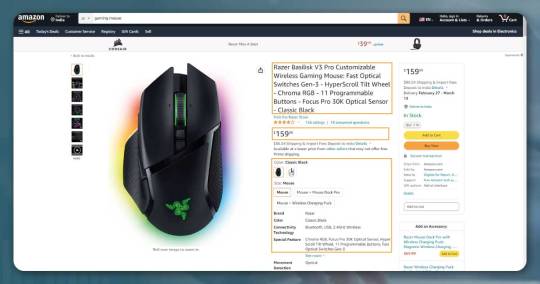
Frankly speaking, for MAP monitoring, all the data needed include product information and pricing.
Step 2: Choose a suitable technique to make data scrapers.
We need to do 10 data scrapers to collect data from corresponding markets and scraping data in a definite frequency.
A programmer need to write 10 scripts to achieve web scraping. Though, the inadequacies are:
Trouble in maintaining web scrapers if a website layout is changed.
Difficulty to cope with IP rotations as well as CAPTCHA and RECAPTCHA.
A supernumerary selection is the use of a data scraping tool made by Actowiz Solutions. For coders or non-coders, this can provide ample web scraping.
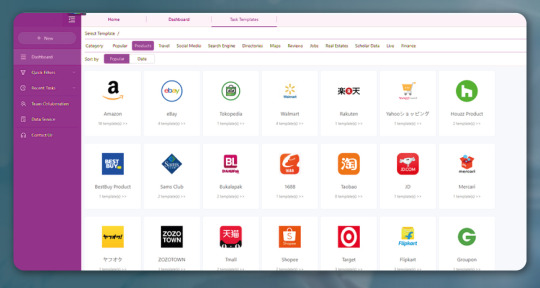
2. Automatic crawler: Also, the latest Actowiz Solutions’ scrapers enable auto data detection and creates a crawler within minutes.

Step 3: Running scrapers to collect data on 10 online markets. To get MAP monitoring, we need to scrape data at definite frequencies. So, whenever you prepare a scraper utilizing computer languages, you might have to start scrapers manually each day. Or, you could run the script with an extraction frequency function written with it. Though if you are using a web scraping tool like Actowiz Solutions, we could set the scraping time consequently.
Step 4: Subsequently after having data, whatever you should do is just go through the required data. Once you recognize any violating behaviors, you can react to it immediately.
Conclusion
For brands, MAP is very important. It helps in protecting the brand reputation and stop pricing war amongst resellers or retailers and offer more alternatives to do marketing. To deal with MAP desecrations, some ideas are there and you can search thousands of ideas online within seconds. Using MAP monitoring, it’s easy to take benefits from web extraction, the most profitable way of tracking pricing across various online markets, Actowiz Solutions is particularly helpful.
For more information, contact Actowiz Solutions now! You can also reach us for all your mobile app scraping and web scraping services requirements
9 notes
·
View notes
Text
The AZ Code - Ultimate Amazon Seller's Blueprint
Product Description: Unlock the doors to Amazon's vast marketplace with The AZ Code, your ultimate guide to succeeding as an Amazon seller. Whether you're a seasoned entrepreneur or just starting your e-commerce journey, The AZ Code provides you with the tools, strategies, and insider knowledge to thrive in the competitive world of online retail.
Key Features:
Comprehensive Training: The AZ Code offers a step-by-step training program that covers every aspect of setting up and running a successful Amazon store. From product sourcing and listing optimization to inventory management and customer service, you'll gain a comprehensive understanding of the entire selling process.
Proven Strategies: Learn from Amazon experts who have achieved remarkable success. The AZ Code unveils proven strategies for product selection, pricing, marketing, and branding that have been tested and refined over time.
Niche Selection: Discover how to identify profitable niches and products that have high demand and lower competition. The AZ Code's research tools and methods help you make data-driven decisions to maximize your chances of success.
Optimized Listings: Master the art of creating compelling product listings. The AZ Code teaches you how to write persuasive product descriptions, choose high-quality images, and incorporate keywords to improve your products' visibility in Amazon's search results.
Marketing Mastery: Explore various marketing techniques, from Amazon's own PPC (Pay-Per-Click) advertising to social media strategies, influencer collaborations, and email campaigns. Learn how to effectively drive traffic to your listings and convert visitors into buyers.
Inventory Management: Avoid common pitfalls related to inventory management and fulfillment. The AZ Code guides you on how to maintain optimal stock levels, choose the right fulfillment methods, and handle seasonal fluctuations.
Customer Experience: Gain insights into providing exceptional customer service on Amazon. Discover how to manage customer reviews, handle returns, and build a positive brand reputation that encourages repeat business.
Scaling Your Business: Once you've established a successful presence on Amazon, The AZ Code helps you explore avenues for growth. Learn how to expand your product line, optimize your operations, and even consider international selling.
Community and Support: Join The AZ Code's exclusive community of like-minded sellers. Share experiences, exchange tips, and get answers to your questions from fellow entrepreneurs who are on the same journey.
Lifetime Updates: The e-commerce landscape is ever-evolving. With The AZ Code, you'll receive lifetime updates to keep up with the latest Amazon policies, algorithm changes, and industry trends.
Whether you're looking to launch your first product on Amazon or take your existing Amazon business to new heights, The AZ Code equips you with the knowledge and strategies to achieve your goals. Unlock your potential as a successful Amazon seller today.
Ready to take your Amazon selling journey to the next level? Don't miss out on the opportunity of a lifetime. Grab your copy of The AZ Code today and unlock the secrets to becoming a successful Amazon seller. Whether you're just starting or looking to scale your existing business, this comprehensive blueprint is your ticket to e-commerce success. Don't wait, seize the chance to transform your aspirations into reality. Join the ranks of thriving Amazon entrepreneurs with The AZ Code by your side. Get started now!
2 notes
·
View notes
Text
Exploring the World of Real Estate: Investment, Development, and Growth
Real estate refers to property consisting of land, buildings, and other natural resources such as water, minerals, and crops. Real estate can be bought, sold, leased, or rented for different purposes such as residential, commercial, industrial, or agricultural use. The real estate market is an important part of the global economy, and it offers opportunities for investment, development, and growth.
Real estate investment can be an attractive option for those looking to diversify their portfolio and generate passive income. Real estate investments can provide stable returns, tax benefits, and potential appreciation over time. Real estate can be purchased through various means, including direct ownership, real estate investment trusts (REITs), and real estate mutual funds.
The real estate market is highly cyclical and can be affected by various factors such as interest rates, economic conditions, and demographics.
In addition to investment opportunities, real estate provides housing and other essential services to communities around the world. Real estate development can have a significant impact on the environment and society, and it is important to consider sustainable practices and social responsibility when developing real estate projects.
Residential real estate refers to properties used for living purposes such as single-family homes, apartments, and condominiums. The demand for residential real estate is driven by factors such as population growth, household formation, and affordability. Residential real estate can provide homeownership opportunities and rental options for those who cannot or choose not to own a home.
Commercial real estate refers to properties used for business purposes such as office buildings, retail stores, and industrial facilities. The demand for commercial real estate is driven by factors such as economic growth, business expansion, and consumer spending. Commercial real estate can provide rental income for investors and space for businesses to operate.
Industrial real estate refers to properties used for manufacturing, distribution, and storage purposes. The demand for industrial real estate is driven by factors such as global trade, logistics, and e-commerce. Industrial real estate can provide rental income for investors and space for businesses to operate.
Agricultural real estate refers to properties used for farming, ranching, and forestry purposes. The demand for agricultural real estate is driven by factors such as food security, environmental conservation, and resource management. Agricultural real estate can provide income for farmers and support for local communities.
Real estate is a complex and dynamic industry, and it requires expertise in various areas such as finance, law, construction, and marketing. Real estate professionals such as real estate agents, brokers, appraisers, and property managers play an important role in the real estate market by providing services to buyers, sellers, investors, and tenants.
The real estate industry is constantly evolving, and new technologies such as artificial intelligence, blockchain, and virtual reality are changing the way real estate is bought, sold, and managed. Real estate professionals need to stay informed about the latest trends and innovations in order to stay competitive and provide value to their clients.
2 notes
·
View notes
Text
Where to custom umbrellas?
Septrainbow Industry & Trade Co Ltd is an innovative manufacturer, exporter, supplier and flexibility supply chain provider, which has more than 20 years manufacturing and design experience in custom umbrellas. We provide the most professional OEM/ODM manufacturing service, product design and development, personalised customized and supply chain solution to customers in worldwide. Today, we have won favors from more partners with creative production & sales model and personalised products, include Wholesalers, Retailers, Importers, Distributors, Promotions & Gifts Agency, S2B Intelligent Supply Chain Service Platform and E-Commerce Sellers, etc.

Septrainbow develops new products every season and the current has 600+ different product designs to support your global business. In past 20 years, we manufactured and designed top quality umbrellas and apparels for many industry-leading customers around the world, the products are well appreciated by our clients. We have the complete raw materials supply chain and related supporting services, from design and development of products, raw materials manufacturing, finished products, printing, packing to testing, quality control and logistics service, etc.
Custom Umbrellas Collections:









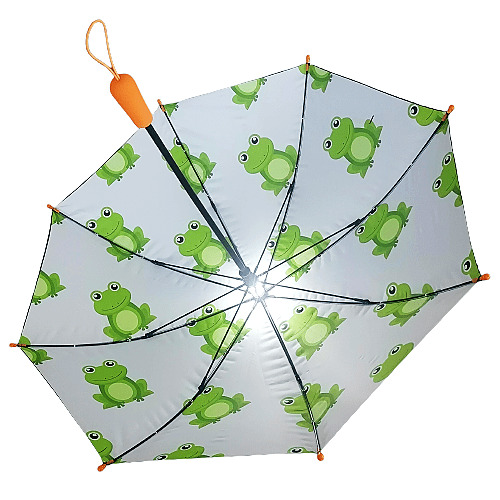
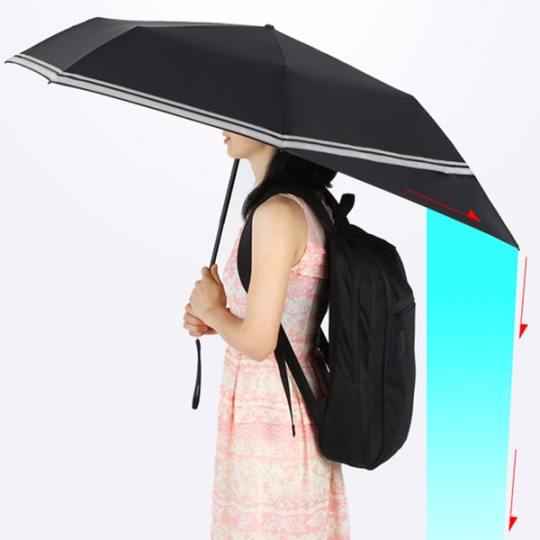



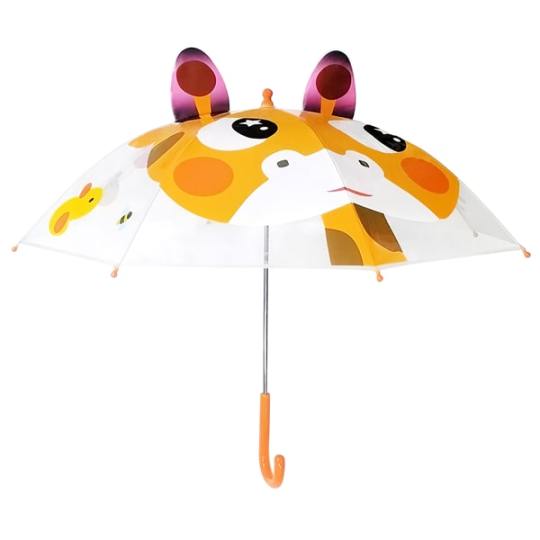
youtube
youtube
#umbrellas#custom umbrellas#umbrella.gifs#personalized#folding umbrella#windshield#car sunshades#windshield sunshades#print#gift ideas#septrainbow#rain umbrella#unique art#golf umbrella#product design#manufacturer#brand#funny image#products#Youtube#factory#suppliers#customized#custom design#china
5 notes
·
View notes
Text
2022 Survey of US Holiday Spending
I surveyed my audience on LinkedIn about their holiday spending intent, method of purchase, types of purchase, and sentiment in the U.S. Consumer spending is always top of mind for marketers, sellers, and retailers. With inflation on the rise, consumers spend differently than when inflation is low.
I asked my audience four questions.
How has inflation impacted your holiday spending?
Which types of holiday gifts are you buying?
How did you buy your holiday gifts this season?
Did you use shoppable ads to make a purchase?
Below you can find the results of each survey question.
1.How has inflation impacted your holiday spending?
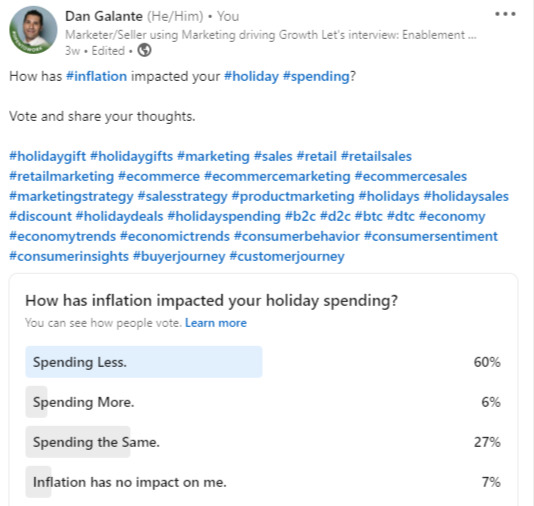
As you can see, 60% percent said they spent less during this holiday season. Consumers must see value in what they are buying. Brands need to create memorable experiences for consumers with their offerings.
2. Which types of holiday gifts are you buying?

This survey was split across different categories. Gift cards were top at 33 % percent of those surveyed saying they were buying gift cards and giving cash as a gift. Experiences and electronics were tied at 25 %. Media was in the lowest category at 17%. Across all of these categories, there are opportunities for brands to sell to consumers.
3. How did you buy your holiday gifts this season?

Based on the survey, 56% percent of consumers said they started their customer journey online; including purchases on a mobile device. Brands need to make an e-commerce experience seamless for customers. Most big box stores are creating an omnichannel buying experience; 31% percent of those surveyed stated that they made purchases online and in-store. Small businesses only received 11 %, followed by only in-store buying at 2%.
These findings suggest that small businesses need to create an e-commerce store to create an omnichannel experience for consumers, catering not just to what they want to buy but how they purchase. Small businesses need to show up where consumers make purchases.
4. Did you use shoppable ads to make a purchase?

75% of those surveyed said that they did not use a shoppable ad to make a purchase. Since late 2019, shoppable increased. Consumers can buy products directly from ads on search engines and many social media sites. This will shorten the customer journey.
Based on my research, my finding suggests:
1. Inflation has dampened consumer spending during the holiday season.
2. Brands need to provide value to consumers creating memorable experiences.
3. Businesses should serve consumers on the channels where they make purchases.
4. How consumers buy will continue to evolve.
5. With Shoppable Ads on the rise, the customer journey will be shorter. More purchases will occur during the time consumers search for products.
It will be interesting to see the consumer sentiment and the price of goods with the release of the CPI and the University of Michigan Consumer Sentiment survey due to be released this week.
How did inflation impact your spending during the holiday season? Share your thoughts.
If you want to share your opinion but didn't get the chance to vote, answer these questions in the comments.
How has inflation impacted your holiday spending?
Which types of holiday gifts are you buying?
How did you buy your holiday gifts this season?
Did you use shoppable ads to make a purchase?
Additional places to find my content and blog
WordPress: https://dangalante.me/
Tumblr: http://www.askdangalante.com/
LinkedIn: https://www.linkedin.com/today/author/DanGalante
Medium https://medium.com/@DanGalante
YouTube https://www.youtube.com/trendsettingsm
Anchor https://anchor.fm/dangalante
About Me
I’m a Strategic Marketer with Field Sales, Sales Enablement, Content Creation, and, Classroom Teacher/Trainer skill sets using Marketing to drive Sales/Growth.
As a Marketer, I’ve worked with Start-Ups, a Political Campaign, and a Digital Marketing Conference.
I’m certified in Inbound Marketing with classes in Marketing, Product Management, Product Marketing, SEO, and SEM.
Before teaching, I was an Outside Sales and Marketing Rep. selling and marketing dental products to Dentists using consultative selling, trade show marketing, field marketing, and market research.
I publish Sales, Marketing & Social Media Today a blog covering industry events and trends.
I’m seeking a full-time role in
Inbound Marketing, Digital Marketing, Content Marketing, Product Marketing, CI, Demand Generation, Social Media Marketing,
Sales Enablement, Enablement, Sales Strategy, Marketing Strategy, Employer Branding, and Recruitment Marketing.
Open on title, industry, company, location, and level. Reach out on LinkedIn or at [email protected] to start a conversation.
3 notes
·
View notes
Text
How to Start Your Journey on PayPal?

PayPal Login is among one of the top most-rated payment platforms. It also allows small business owners to procedure payments via a forum customers trust. Moreover, it provides many services for business owners, and the range of its services can be a bit confusing if you are just getting commenced with payment processing. Simply put, PayPal allows you to accept payments on a site such as an e-commerce store. Moreover, you also utilize it to accept in-person payments, like for a retail store or a stand in a vacation/holiday fair.
Using this platform, all merchants can accept all crucial credit cards, Venmo, pay cryptocurrencies, and options. Furthermore, it also offers a Seller’s Protection Program for capable merchants. Suppose a buyer disputes a transaction; this will ensure you are preserved as a merchant. Now, this guide will help you to start your journey on PayPal.
Visit here:- PayPal Login My Account
3 notes
·
View notes
Text
Keeping It Private
It was while suffering through my dissertation focusing on supermarkets that I came to have a deep and abiding love for the product variable in the marketing discipline. I had to spend hundreds of hours traveling to, and interviewing with, supermarket managers across the state of Indiana, all in the name of exploratory research. This was necessary before I could even begin to dive in to creating the real study.
That study wound up being an effort to model the corporate buyers’ purchasing process. It’s a hidden part of business that average consumers never consider, because we just find our stuff on the shelf, and go home. But how did they get to the shelf in the first place?
It’s a complicated process, and by the time those products do hit shelves, all four of the 4Ps have been used. It all begins with the corporate buyer being approached by salespersons bearing samples and literature to try to sway the buyer to adopt the item or items.
And in the supermarket business alone, there are now up to 30,000 new items each year, while the typical modern grocery “only” has room for 45,000 different ones. That means there is an ongoing battle waged by makers of new items to nudge out makers of old items, knowing all the while that many products are mainstays and will never be nudged.
Now consider when the retailer is an e-commerce provider. They are not as physically bound as supermarkets, if only because warehouses tend to be much larger, and it doesn’t cost anything to add yet another item to a website. But there are still limits at some point, not the least of which is the cost of holding inventory.
As for the types of products supermarkets carry, they range from the truest of innovations (which often get approvals if only because they are unique at least for a while), down to me-toos (effectively imitating some other manufacturer’s item), line extensions (like new flavors), short-term promotional items (like Pepsi Peeps), and private labels.

And it is the private labels that are getting a lot of attention these days. They’ve been around since at least the 1950s in groceries, and are “house brands” that are usually of good quality, but sell for significantly less than national brands. They are commonly manufactured by those same national brand manufacturers, who are selling off unused capacity. In some instances, though, there are food and beverage companies that only do contract manufacturing.
The result is the same: a brand unique to a chain, and—here is the important part—typically given premier status. You can’t bump these from the shelf.
Because, you know, it’s theirs. Of course they are going to treat it the best.
It has been during this inflationary cycle that shoppers began preferring private labels. But now, three in four shoppers report they plan to continue buying private labels after the economy settles. They are buying them now out of necessity, but as should have been happening all along, are finding them to be of similar quality and value compared to their national favorites.
Already, Amazon has a large assortment of private label products, and six weeks ago, GoPuff, an online seller of household basics, announced theirs. Multichannel retailers like Target and Walmart have doubled down on theirs as well. Often, these retailers have several different “brands” of their own, not just one.
Private labels, in spite of having lower retail prices, often have higher margins for their sellers. It makes perfect sense to push these. And the reasons they have lower retail prices range from seldom if ever being advertised, to the fact that they are buying someone else’s unused capacity.
Most shoppers don’t even realize how many private label products surround them. In clothing the triple play of Gap, Banana Republic, and Old Navy all feature private labels. In fact, the entire stores and brands are private label. That’s another way of saying that the store is the brand. Other clothing retailers, like Dillard’s, feature a mix of branded garments and private label.
Back in the grocery business, Trader Joe’s and Aldi, which are related because of their common German family lineage but are actually still distinct, both feature about 85-90% private label products. The remaining handful are recognizable brands. In both cases, though, shoppers trust TJ’s for their quality, and Aldi for their low price.
I find all of this intriguing, because when I started down this academic road in the mid-1980s, private label products were only a step above the so-called generic foods, both stigmatizing the buyer as being someone of lesser means to buy the more common national products. But the bubble of that stigma has been burst of late. Shoppers are not worried so much about what others think about their cart’s contents, and more about being able to avoid having to return an item to the shelf once they get to the check stand.
Little did I know that I could make a career out of focusing on just one of the 4Ps, but I have done just that. And every semester I get to tell the same old stories, and repeat the same basic lecture material.
Because some things never change, never grow old. Except me, of course. And I am about as private label as they come.
Dr “Copyright 1959“ Gerlich
Audio Blog
2 notes
·
View notes
Text
Types & examples of e-commerce businesses
Hrithik Sharma
Internet is not only for entertainment purposes. it is a way to represent your skills and teach others & a wonderful platform to connect with your loyal customer. Today we will see how many different ways we can sell our product to customers { in any form }.
What is e-commerce?
Full-form of e-commerce: electronic commerce.
The process in which business or commerce transactions are done over the internet via a website using mobile or desktop.
You can sell anything from “mobile covers” to “website plugins” through your website or register to another platform, even though you can target second-hand goods to needy ones.
e-commerce can be available for generic & specific goods
{1} Generic – where consumers can buy anything from books to home decor
e.g. Amazon or Ali express
{2} Specific – here they sell only specific products such as only furniture goods or only stationery products.
e.g. FreshDirect
We have a different way to serve our customers with different medium
Types:-
{1} B2B – Business to Business
When a manufacturer sells a product to a wholesaler directly, if you are a manufacturer you can develop your website or list your company to different B2B agencies to serve wholesalers or small businesses.
e.g. Alibaba
{2} B2C – Business to Consumer
When a company or seller develops their portal to sell the goods, services & products directly to the buyer. A third person develops the portal or website to incorporate the manufacturer, whole seller or retailer to sell goods.
e.g. Amazon
{3} C2C – Consumer to Consumer
Where one consumer sells the goods, services & products to another consumer using the internet made by a third party.
e.g. Ebay
{4} C2B – Consumer to Business
Here consumers provide services to businesses e.g. if you go to Fiverr you can find various freelance working for organisations to assist to write the blog or develop specific software for them
e.g. Freelancer or Fiverr
{5} B2G Business to Government
Where government agency acts as a customer & business as a supplier e.g. when government organise the tender at the portal and bidder { business } comes to bid.
e.g. Boeing ( producing military hardware for the US government)
{6} D2C Direct to Consumer
Here organisation sells the product to consumers directly without any middlemen and they can easily reach their customers without going through thousands of processes.
e.g Dollar Shave Club
stay connected with us for more articles:- cerrein.com
2 notes
·
View notes
Text
People of all ages use wooden furniture in their homes. The craftsmanship and natural look of wood appeal to consumers, who appreciate the material's strength and soft touch. Furniture made with wood is also durable and resistant to temperature changes and moisture. Many people buy wooden items such as tables, chairs and doors to decorate their homes. They're also good for outdoor spaces as they withstand the elements well. People buy wooden items from brick-and-mortar stores or online retailers. However, there are some disadvantages to buying wooden furniture this way.
Most Indian households prefer wooden furniture due to cost and durability considerations. Furniture made out of wood is cheaper than similar plastic or metal items. Plus, wood's natural properties make it much easier to care for compared to synthetic materials like plastic. Consequently, people can purchase more of it without breaking the bank. Online platforms make it easy to buy wooden tables and chairs in India. They tailor the market for Indian buyers by offering affordable wooden products via online retail. Plus, these sites allow for easy returns if unsatisfactory results occur post-purchase. This guarantees that every online purchase results in a positive outcome for the buyer and seller alike.
#Buy Wooden Table Online in India#Buy Wooden Table Online#Buy Wooden Table#Wooden Table Online#Sandcolour
2 notes
·
View notes
Text
Automated Parcel Delivery Terminals Market is set for a Potential Growth Worldwide: Excellent Technology Trends with Business Analysis
Automated Parcel Delivery Terminals Market Comprehensive Study is an expert and top to bottom investigation on the momentum condition of the Global Automated Parcel Delivery Terminals industry with an attention on the Global market. The report gives key insights available status of the Global Automated Parcel Delivery Terminals producers and is an important wellspring of direction and course for organizations and people keen on the business. By and large, the report gives an inside and out understanding of 2021-2027 worldwide Automated Parcel Delivery Terminals Market covering extremely significant parameters.
Some key Players in This Report Include Smartbox Ecommerce Solutions Pvt. Ltd. (India),Cleveron Ltd. (Estonia),InPost (Poland),KEBA AG (Austria),Neopost Group (United States),Bell and Howell, LLC. (United States),Winnsen Industry Co., Ltd. (China),ByBox Holdings Ltd. (United States),ENGY Company, and TZ Ltd. (France),TZ Limited (United States)
Automated parcel delivery terminals are computer-controlled delivery solutions which are furnished with several storage units to stock parcels. It is a substitute delivery solution as it supports in reducing the expenditure which is gained in logistic chain. The automated parcel delivery terminals also help in good organisation in deliveries and generating new prospects. It supports logistics and sellers to cut down losses incurred while last minute delivery failure. These terminals are equipped with POS equipment which helps in cash on delivery via cards.
Market Trends: Increase in Demand for Autonomous and Electric Vehicle for Parcel Delivery
Market Drivers: Growing Adoption of Innovative Distribution Channel
Growing E commerce Industry is Fuelling the Market
Market Challenges: Susceptibility to Burglary May Hamper the Market
Market Opportunities: Increased R&D in Applications of Advanced Systems
Growing Cross Border Deliveries
The Global Automated Parcel Delivery Terminals Market segments and Market Data Break Down by Type (Indoor terminal, Outdoor terminal), End users (Logistics & shipping, Retail, Government organisations, Others)
Presented By
AMA Research & Media LLP
2 notes
·
View notes